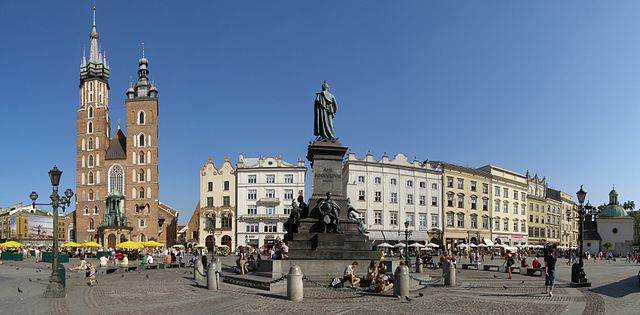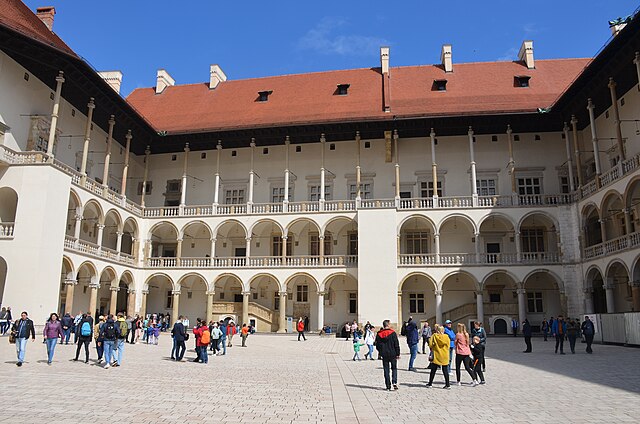The Kraków uprising of 1846 was an attempt, led by Polish insurgents such as Jan Tyssowski and Edward Dembowski, to incite a fight for national independence. The uprising was centered on the city of Kraków, the capital of a small state of Free City of Krakow. It was directed at the powers that partitioned Poland, in particular the nearby Austrian Empire. The uprising lasted about nine days and ended with Austrian victory.
Attack of the Krakusi on Russians in Proszowice during the 1846 uprising. Juliusz Kossak painting.
Kraków, also seen spelled Cracow or absent Polish diacritics as Krakow, is the second-largest and one of the oldest cities in Poland. Situated on the Vistula River in Lesser Poland Voivodeship, the city dates back to the seventh century. Kraków was the official capital of Poland until 1596, and has traditionally been one of the leading centres of Polish academic, economic, cultural and artistic life. Cited as one of Europe's most beautiful cities, its Old Town with Wawel Royal Castle was declared a UNESCO World Heritage Site in 1978, one of the world's first sites granted the status.
Image: Krakow Rynek Glowny panorama 2
Image: XII, XIV, XIX, Kraków
Image: Kościół p.w. św. Piotra i Pawła, Kraków
Image: 02023 0692 Wawel Castle





